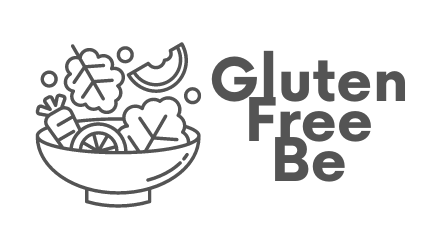Living with a gluten-free diet doesn’t mean sacrificing flavor or variety in your meals. With the increasing awareness and availability of gluten-free products, it has become easier than ever to create delicious dishes without compromising dietary restrictions. The key lies in stocking your kitchen with essential gluten-free ingredients that form the foundation of a versatile and enjoyable gluten-free culinary experience. In this blog post, we will explore ten essential gluten-free ingredients that every gluten-free kitchen should have. From grains and flours to binders and flavor enhancers, these ingredients will help you create mouthwatering meals while maintaining a gluten-free lifestyle.

1. Brown Rice Flour
Brown rice flour is a staple in gluten-free baking. It is milled from whole grain brown rice, making it a nutritious alternative to wheat flour. This versatile ingredient adds a delicate nuttiness to recipes and can be used as a one-to-one replacement for wheat flour in most recipes. Brown rice flour works well in cakes, cookies, bread, and pie crusts, providing a light and tender texture. It can also be used as a thickener for sauces and soups.
2. Quinoa
Quinoa, often referred to as a superfood, is a gluten-free grain packed with protein, fiber, and essential nutrients. It is a great alternative to wheat-based grains like couscous or bulgur. Quinoa can be used as a base for salads, pilafs, or as a side dish. It also works well in baked goods, adding a nutty flavor and a pleasant texture.
3. Almond Flour
Almond flour, made from finely ground almonds, is a versatile gluten-free ingredient that adds richness and moisture to baked goods. It works exceptionally well in recipes that require a denser texture, such as cookies, cakes, and muffins. Almond flour can also be used as a coating for meats or as a thickener for sauces and gravies.
4. Coconut Aminos
Coconut aminos are a gluten-free alternative to soy sauce. Made from the sap of coconut blossoms, coconut aminos add a savory and slightly sweet flavor to dishes. It is a suitable replacement for those following a gluten-free or soy-free diet and can be used in marinades, stir-fries, dressings, or as a dipping sauce.
5. Arrowroot Starch
Arrowroot starch is a gluten-free thickening agent derived from the root of the arrowroot plant. It is an excellent substitute for wheat-based thickeners like cornstarch or flour. Arrowroot starch works well in gravies, sauces, soups, and fruit fillings, providing a smooth and glossy texture.
6. Chia Seeds
Chia seeds are a nutrient-rich ingredient that can be used in a variety of gluten-free recipes. They are a great source of omega-3 fatty acids, fiber, and antioxidants. Chia seeds can be used as an egg substitute in baking, added to smoothies, sprinkled on top of yogurt or oatmeal, or used to make chia pudding.
7. Tamari
Tamari is a gluten-free soy sauce alternative made from fermented soybeans. It has a rich, savory flavor and can be used in a wide range of dishes, including stir-fries, marinades, and salad dressings. Tamari is a must-have condiment for gluten-free kitchens.
8. Tapioca Flour
Tapioca flour, also known as tapioca starch, is a gluten-free flour made from the starchy root of the cassava plant. It is commonly used as a thickener in gluten-free baking and cooking. Tapioca flour adds a chewy and springy texture to baked goods and works well in recipes like bread, pizza dough, and pancakes.
9. Coconut Flour
Coconut flour, made from dried and ground coconut meat, is a high-fiber, low-carbohydrate gluten-free alternative to traditional flours. It absorbs a significant amount of liquid, so it is essential to use it in combination with other flours or adjust the liquid content in recipes. Coconut flour is commonly used in baking to create light and fluffy pancakes, muffins, and cakes.
10. Nutritional Yeast
Nutritional yeast is a deactivated yeast that adds a savory, cheese-like flavor to dishes. It is a popular ingredient in vegan and gluten-free cooking. Nutritional yeast can be sprinkled on popcorn, pasta, salads, or used as a seasoning in soups, sauces, and dips.
Maintaining a gluten-free lifestyle does not mean compromising on taste or variety. By stocking your kitchen with essential gluten-free ingredients like brown rice flour, quinoa, almond flour, coconut aminos, arrowroot starch, chia seeds, tamari, tapioca flour, coconut flour, and nutritional yeast, you can create delicious and diverse meals while adhering to your dietary needs. Experiment with these ingredients, explore new recipes, and embrace the world of gluten-free cooking. With a well-equipped gluten-free kitchen, you’ll be able to whip up delectable dishes that are sure to satisfy both your taste buds and your dietary requirements.



